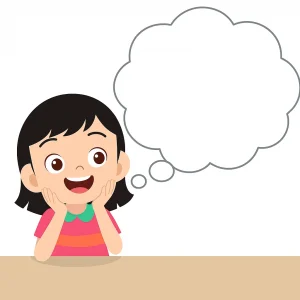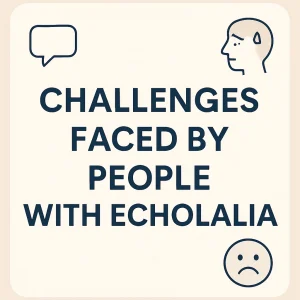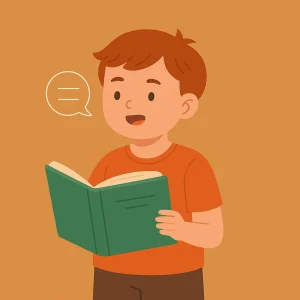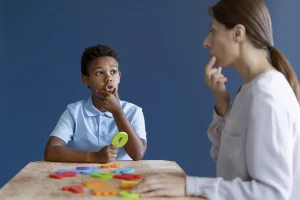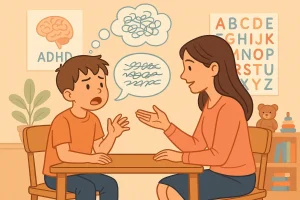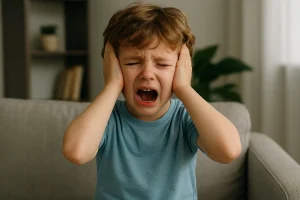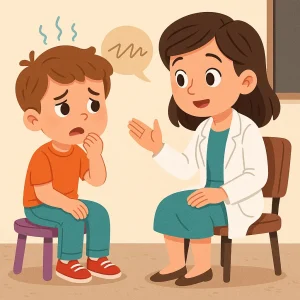12 Social Stories to Teach Kids Essential Communication Skills
By Rajini D
Last Updated: February 27, 2025
Effective communication skills are essential in childhood development, helping kids express themselves and interact with others. Social stories are an excellent tool for teaching these skills, offering real-life scenarios for children to learn from. In this article, we’ll explore 12 engaging social stories designed to enhance key communication skills. Each story is not just educational but also enjoyable, ensuring that learning is interactive and impactful for young learners. Let’s dive into these creative narratives that promise to make a significant difference in developing confident communicators.
What is a Social Story?
A social story is a simple, engaging tool created by Carol Gray in the early 1990s to help children understand social interactions. Originally designed for kids with autism, social stories break down everyday situations into easy-to-follow steps, showing what to expect and how to respond.
These stories are beneficial for all children as they teach empathy, social cues, and appropriate behaviors in a clear and relatable way. By regularly reading social stories, children can better navigate their social environment, making interactions more understandable and less daunting.
Also read: What is Social Stories Intervention For Autism?
The Importance of Communication Skills in Early Childhood
Communication skills are the foundation of all social interaction. They encompass everything from speaking and listening to understanding nonverbal cues like facial expressions and body language. For young children, developing these skills is about more than just learning to talk; it’s about learning to express needs, desires, and emotions in ways that are understood by others.
From the playground to the classroom, robust communication skills are crucial. They play a pivotal role in a child’s social integration and academic success. Being able to articulate questions and express thoughts clearly helps children engage more fully in their educational environment and fosters relationships with peers and adults.
12 Social Stories to Teach Essential Communication Skills
Social stories are not just fun tales; they are powerful tools for teaching vital communication skills. Each story in our list below has been crafted to highlight a specific skill, using everyday scenarios that children can relate to and learn from. Let’s explore these stories and see how they can help children navigate the complex world of communication.
1. How to Ask for Help – Jamie’s Adventure in the Library
Story: Jamie feels a bit lost in the big library. Remembering what his teacher taught him about asking for help, he approaches the librarian and asks politely, “Can you help me find a book about dinosaurs?” The librarian smiles and leads him to the right section, making Jamie feel proud and relieved for asking.
2. Expressing Feelings When You Are Sad – Emma’s Mixed-Up Day
Story: Emma is sad after misplacing her favorite toy and struggles to express her feelings. Her observant teacher shares a story about a girl who felt the same way but learned to articulate her emotions. Inspired, Emma tells her friends, “I’m sad because I lost my bear,” and feels comforted by their empathy.
3. The Importance of Listening to Others – Listening to Leo
Story: Leo is excited to share his zoo adventure with the class. As he speaks, his classmates listen attentively, nodding and smiling, showing they value his experience. This story emphasizes the importance of being a good listener.
4. Learning to Share and Take Turns – The Sharing Train
Story: During playtime, a group of children learns that their train set works best when shared equally. Through simple storytelling, they discover the joy and fairness of taking turns.
5. Greeting New Friends Properly – Molly Meets a New Friend
Story: Molly, usually shy, learns the power of a simple “Hello!” When a new student joins the class, she greets him warmly, sparking a new friendship. This story highlights the first step in making connections.
6. Following Instructions to Complete Tasks – Building the Big Puzzle
Story: A large puzzle challenges a class, but by following the teacher’s step-by-step instructions, they successfully complete it together. This narrative reinforces the importance of clear guidance.
7. Understanding the Meaning of ‘No’ – No Cookies Before Dinner
Story: Tom craves a cookie before dinner, but his mom explains why he must wait. This story helps Tom—and young readers—understand that sometimes, “No” can lead to better outcomes, like enjoying a healthy meal before dessert.
8. How to Apologize and Mend Friendships – Sorry is the First Step
Story: After accidentally breaking Mark’s pencil, Sarah learns how to apologize genuinely. Her story teaches that a sincere apology can repair and strengthen friendships.
9. Encouraging Curiosity by Asking Questions – Curious Casey
Story: Casey’s inquisitive nature is encouraged through a story about a curious child who asks about everything from the blue sky to how cars work. It celebrates the importance of questioning as a way to learn.
10. The Joy of Giving Compliments – Compliments from Katie
Story: Katie discovers the impact of kind words when she compliments Lucy on sharing her crayons. The story shows the power of positive reinforcement among peers.
11. Joining a Group the Right Way – Timmy Joins the Game
Story: Timmy feels nervous about asking to join a soccer game. A helpful story teaches him the right way to ask, and he is happily included by the other children, illustrating the right approach to social inclusion.
12. Respecting Others’ Personal Space in Social Settings – Space Bubble
Story: Lily enjoys giving hugs but learns through a story that not everyone is comfortable with close contact all the time. She learns to ask, “Can I give you a hug?” respecting others’ personal space.
How to Apply Social Stories in Real-Life Situations
| Social Story | Communication Skill | Real-Life Application | Parent Reinforcement Tips |
|---|---|---|---|
| Jamie’s Adventure in the Library | Asking for Help | Asking a teacher for help at school | Encourage kids to ask for help instead of guessing or struggling. |
| Emma’s Mixed-Up Day | Expressing Feelings | Telling a parent when feeling upset or excited | Use emotion cards to help children identify their feelings. |
| Listening to Leo | Listening to Others | Paying attention when a friend is speaking | Play listening games like “Simon Says” to improve focus. |
| The Sharing Train | Sharing and Taking Turns | Taking turns while playing with siblings | Praise and reward positive sharing behaviors. |
| Molly Meets a New Friend | Greeting Others | Saying “Hi” to a new classmate or neighbor | Role-play different greetings with family members. |
| Building the Big Puzzle | Following Instructions | Following multi-step directions at home or school | Give fun, simple instructions like “Clap your hands, then jump!” |
| No Cookies Before Dinner | Understanding ‘No’ | Accepting when a parent says “No” to extra screen time | Explain the reason behind “No” calmly to encourage understanding. |
| Sorry is the First Step | Apologizing | Saying “I’m sorry” after accidentally hurting someone | Model apologies in daily life and encourage kids to practice. |
| Curious Casey | Asking Questions | Asking “Why?” and “How?” when curious | Encourage curiosity by answering questions patiently and encouraging exploration. |
| Compliments from Katie | Giving Compliments | Saying “Great job!” to a friend or sibling | Practice giving compliments at home and explain their impact. |
| Timmy Joins the Game | Joining a Group | Asking to join a game at school | Teach polite phrases like “Can I play too?” and encourage participation. |
| Space Bubble | Respecting Personal Space | Keeping a safe distance in public places | Use fun exercises like “pretend you have a bubble around you” to teach personal space. |
Conclusion
Our twelve social stories offer fun, engaging ways to master essential communication skills. From asking for help to respecting personal space, each story is a stepping stone towards better communication. We encourage parents and educators to make these stories a regular part of learning, enriching children’s social skills and boosting their confidence. By integrating these simple narratives into daily routines, children become adept at expressing themselves and navigating social situations. Explore more resources at Wellness Hub and see how these stories can shape your child into a confident communicator, ready for a lifetime of connections and success.
Frequently Asked Questions:
1. What are social stories for kids?
Social stories are short stories that describe social situations to children in a clear and understandable way, helping them learn how to behave in various social settings.
2. How can social stories improve communication skills in children?
Social stories teach children effective communication by showing them realistic examples of how to interact, ask questions, express feelings, and more, through simple narratives.
3. Why should parents use social stories for early childhood development?
Social stories can play a crucial role in early childhood development by teaching children essential social and communication skills, enhancing their ability to express themselves and understand others.
4. Can social stories help children with autism?
Yes, social stories are particularly beneficial for children with autism as they help clarify the expectations of social interactions, making it easier for these children to understand and engage with others.
5. What are some examples of social stories for teaching manners?
Examples include stories about saying “please” and “thank you,” how to greet someone politely, and the importance of taking turns and sharing.
6. How often should I read social stories to my child?
Reading social stories regularly, such as daily or several times a week, can reinforce the behaviors and skills taught in the stories, making them more effective.
7. Where can I find social stories to read to my child?
Check out resources like Wellness Hub, which offers a variety of social stories designed to improve communication skills in children.
8. Are social stories only for young children?
While social stories are especially useful for young children, they can also be adapted for older children and teens to address more complex social situations.
9. How do I write a social story for my child?
Start by identifying the skill or behavior you want to teach. Write the story using simple, direct sentences and include specific examples that your child can relate to.
10. Can social stories be used in the classroom?
Yes, teachers can use social stories in the classroom to help students understand and follow school rules, learn social norms, and improve interaction with peers.
About the Author:
Rajini Darugupally
Rajini Darugupally, M.Sc., is a licensed Speech-Language Pathologist with over nine years of experience specializing in both early childhood speech and language development and adult communication disorders. She has worked extensively with children facing speech delays, articulation disorders, and social communication challenges, using evidence-based therapy techniques to enhance their communication skills.
In addition to her work with children, Rajini specializes in adult speech and language disorders, including aphasia, traumatic brain injury (TBI), stroke-related communication challenges, dysarthria, and swallowing disorders (dysphagia). Her expertise spans clinical, educational, and teletherapy settings, where she has helped individuals regain and strengthen their communication abilities.
Rajini holds a Master’s degree in Speech-Language Pathology and is deeply committed to empowering parents and caregivers to support speech and language development at home. Currently, she serves as a lead speech therapist at Wellness Hub, where she collaborates with a team of professionals to create personalized therapy plans and educational resources for families.
Book your Free Consultation Today
Parent/Caregiver Info:
Client’s Details:
* Error Message
